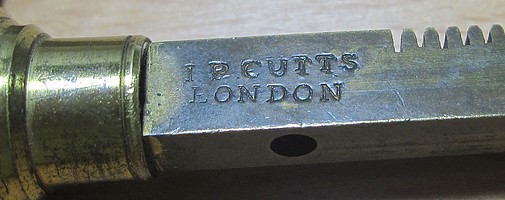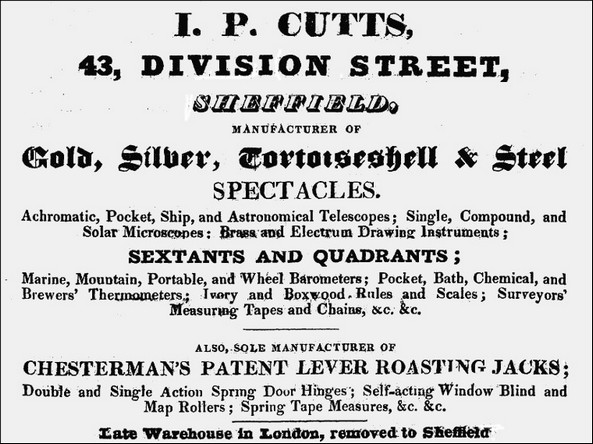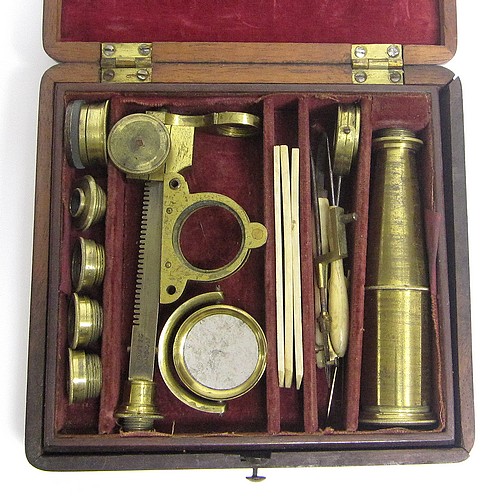
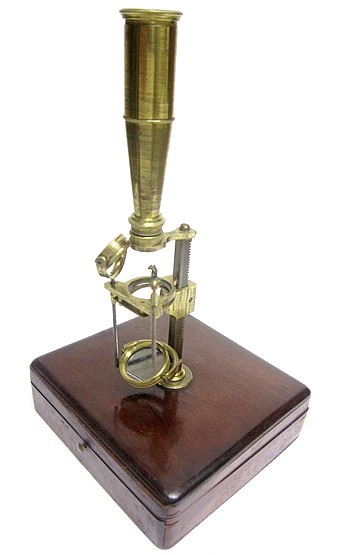
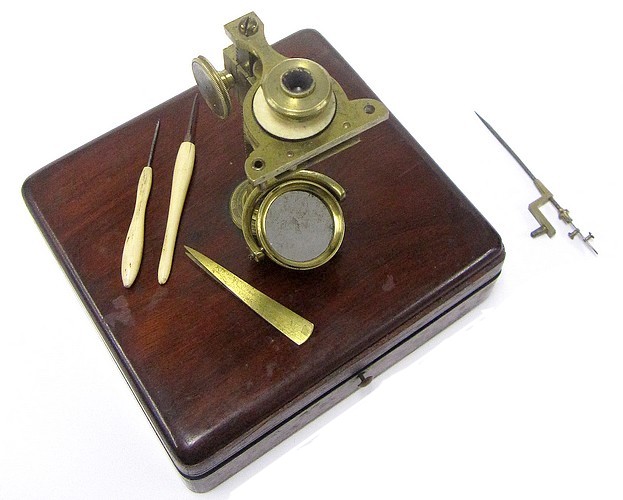
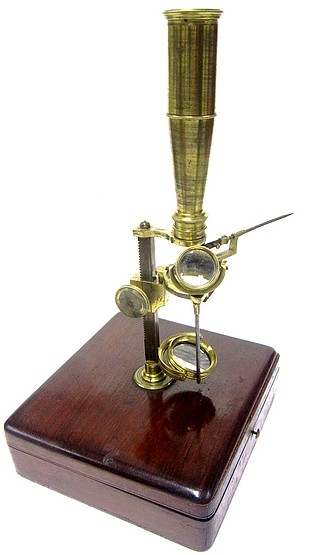
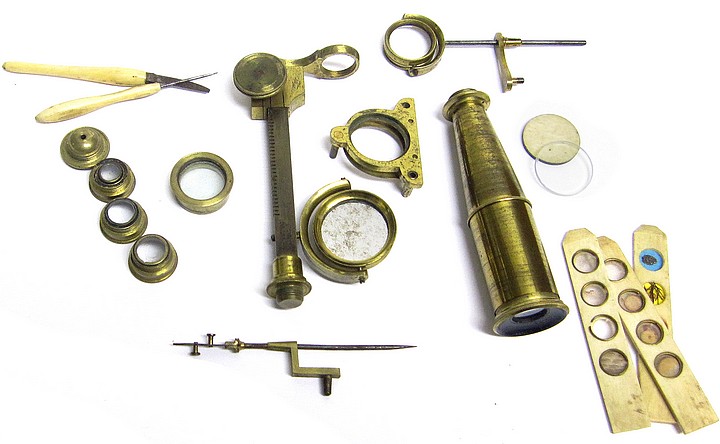
Among the accessories supplied with this microscope are three stackable objectives that can be used individually or in various combinations to vary the magnification, another high power objective that is used without the compound tube, a live box, a stage forceps, a hand forceps, a stage-mounted condenser, ivory and glass stage inserts, two dissecting tools with bone handles, and three ivory sliders.
The Gould type microscope is described and illustrated in the book Microscope Manipulation by George T. Fisher, 1845 as follows:
Gould's Microscope. A very convenient and powerful form of instrument is that which bears the above name. Its general form is as in the annexed diagram, and the whole fits into a mahogany box. In the centre of the lid of the box screws the upright square stem A, fig. 14. This has upon one side of it a rack movement, in which works the screw B, intended to raise or depress the stage C, as occasion requires. C consists of two plates of brass held together by a spring; between these plates the object slider D is placed. E is an arm at right angles to A; it is attached and confined by the screw at the end of it in A. F must be supposed to represent three lenses, or magnifiers, screwed together, the focus of each being such that they act in unison together. G is a reflector to cast the light upwards through the object to the eye. H is the main tube, which bears the eye-lens at one end, and screws upon one of the object lenses at the other.
When the instrument is in
use, the focus is adjusted by moving the screw B, and
the degree of magnifying power is according to the
lenses, which are screwed on to the bottom of H. Thus,
if one lens obtain an increase of 10, two lenses may
obtain a power of 100, and three lenses of 1000. Let it
be always remarked, that the more lenses the more
obscure will be the image.
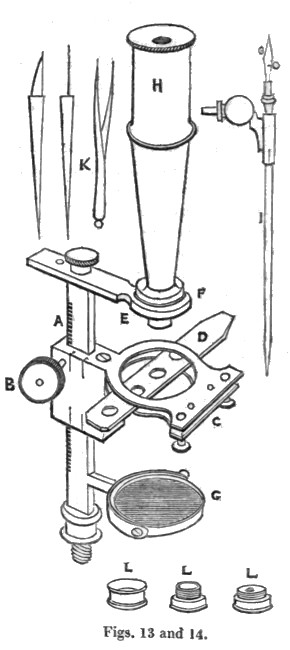
This microscope was made by John Priston Cutts (1787 - 1858). It is signed I.P. Cutts, London (Cutts used I.P. interchangeably with J.P). While his business was primarily located in Sheffield, for a brief period in the mid 1830's, he also operated out of London. By 1840, instruments were signed J.P. Cutts & Sons, Sheffield.
